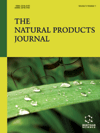
Full text loading...
We use cookies to track usage and preferences.I Understand
A seizure is the brain's uncontrolled, abnormal electrical activity, which may result in altered states of consciousness, behavior, memory, or emotion. Seizures start biologically with the activation of susceptible brain neurons, which causes synchronized discharges of larger groups of connected neurons. A few potential causes of seizures include medications, genetics, electrolyte abnormalities, sleep state, infections, brain inflammation, and injuries. Medicinal plants are a rich source of various chemical molecules with distinct structures and biological activity. Most plants contain active components, including coumarin, glycosides, alkaloids, terpenoids, flavonoids, peptidoglycans, and other elements often associated with the effects of antiseizures. Isolating and identifying biologically active compounds and molecules from nature have resulted in the development of novel treatments, which in turn have contributed to the advancement of the health and pharmaceutical sectors throughout the history of humanity. In this review, we thoroughly summarize the information on the anti-seizure activities of medicinal plants and bioactive chemicals, focusing on molecular targets and cellular signaling pathways. All available research has contributed to medicinal plants as a reasonable option for seizure prevention and treatment, as well as drug development and manufacturing. To better comprehend the underlying molecular mechanisms, more research is required. If these mechanisms are discovered, it will be easier to identify new targets and create innovative anti-seizure therapeutic drugs to enhance patient survival and life quality. This work is expected to provide insights and ideas for the further research of Bioactive compounds from medicinal plants, their qualities, and the scientific basis for their improved clinical use.

Article metrics loading...

Full text loading...
References


Data & Media loading...

